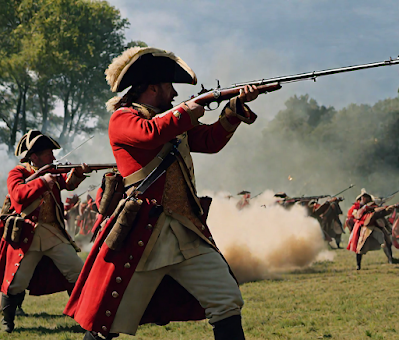Hello friends, how are you all, I hope you are all healthy and having fun. Today in this article of Gaurav Sangrah, we are going to talk about Sarojini Naidu, a women freedom fighter:
- who was a freedom fighter as well as an Indian poet and political activist in Indian History.
- who was named "Hind's Bulbul" by Gandhiji.
- who went to jail 21 times to get the country free.
- first woman governor of independent India.
Today we get to know about such a country lover Sarojini Naidu.
 |
| Sarojini Naidu |
Who was Sarojini Naidu?
Sarojini Naidu was born on 13 February 1879 in a Bengali Brahmin family in Hyderabad. She was the eldest among eight siblings. Her father Adhorinath Chattopadhyay, who was a professor at Nizam College in Hyderabad, also worked as a social reformer.
Her mother Vardasundaridevi write poems in Bengali language. Mother was a poet, father was a social reformer, so daughter had the qualities of both parents. Sarojani Naidu had a court marriage with Govinda Rajulu Naidu.
She married into another caste. At that time marrying into another caste was considered a crime. But the father allowed the marriage without any discrimination. Earlier her surname was Chattopadhyay, after marriage the surname was Naidu.
How did Sarojini Naidu got a scholarship to pursue further education?
Sarojini Naidu was very bright in acquiring education. She passed the matriculation examination when she was 12 years old. She came first from Madras University in the matriculation examination. Bengal was ruled by the Nizam at that time.
 |
| Nizam |
The Nizam was delighted by her poetry collection "The Golden Threshold", which had become so much popular. So she received a scholarship from Nizam College to study accounting. She went to England to do her college education. Educated at King's College London in England and Girton College, Cambridge University.
What achievements did Sarojini Naidu achieved in her life?
1.Sarojani Naidu knew many languages like Urdu, Telugu, Hindi, English and Bengali and could speak and write well. She was very fond of writing poems. She used to write poetry in Hindi, English, Gujarati, Bengali etc languages.
She inherited writing poetry from his mother as his mother also wrote poetry. Her first poetry collection "The Golden Threshold" which was published in 1300 lines became very popular.
2. Sarojni Naidu was also doing social welfare work, she went to the villages and served the poor people. She used to be present in places where there was a flood in the river or there was a drought and provided food, water, clothes and shelter to the people.
 |
| Rescue in flood |
Pleased with her work, the British government also awarded her "Keshari Hind". After seeing the atrocities committed by the British in Jallianwala Bagh, Sarojini Naidu returned the award to the British government.
3. One day Sarojini Naidu met with Gopal Krishna Gokhale. Gopal Krishna Gokhale greatly appreciated her poems and mentored her in writing them.
If one writes on the subject of revolutionaries, the spirit of revolutionaries will be generated in the people and the spirit of fighting for the freedom of the country will be awakened. She started writing poetry on Krantikari (Revolutionaries), following the words of Gopal Krishna Gokhale. Poems reached the masses and her poetry came in handy in the freedom struggle.
4. Sarojani Naidu was elected as the second woman president of the Indian National Congress.
5. She became the first woman governor of independent India after independence.
How Sarojini Naidu educated people in the freedom movement?
Sarojini Naidu used to go from village to village giving lectures. Women were taken out of the kitchen and explained their rights. She used to give information about things like widow remarriage, women education, participation in the freedom struggle. As social worker, she always helped the poor and distressed people.
After meeting Gandhiji, she was with Gandhi Bapu in many satyagrahas like Dandi March, Quit India Movement, Non-Cooperation Movement.
Due to the number of agitations Sarojini Naidu had done with Gandhi Bapu, she even had to go to jail at times. Sarojni Naidu had also stayed in jail for 21 months. She also traveled to countries like America, Africa, London to spread awareness to bring freedom to the country.
Some of Sarojini Naidu's famous Poems.
Following are the names of famous poems written by Sarojini Naidu.
- Suttee
- To Indian
- Indian Wavers
- Indian Dancer
- The Soul's Prayer
- Ecstasy
- The Golden Threshold
- In The Forest
- Palanquin Bearers
- An Indian Love Song
- Nightfall City in Hyderabad
- Damayante to Nala in the Hour of Exile, etc
Conclusion:
In this article we have seen how much Sarojini Naidu contributed to the freedom of the country. She was called "Bulbul-e-hind" due to her sweet voice. Gandhi gave her the name "Bharat Kokila".
She suffered a heart attack while working in his office as usual in Lucknow. She died of heart disease on 2 March 1949. Her birth day is also celebrated as National Women's Day. On 13 February 1964, the Government of India issued a 15 paise postage stamp in his memory.
So here, I would like to conclude my article here. Hhow did you liked this article on Sarojini Naidu? What are the things which should be added more in this article? If anything is remaining about Sarojini Naidu in this article feel free to comment in the comment box.
Thank you very much for reading this article till the end.
If you liked the article then do share it with your family and friends.
We will come back very soon in another article with such another women freedom fighter from Indian History, till then take care.




















